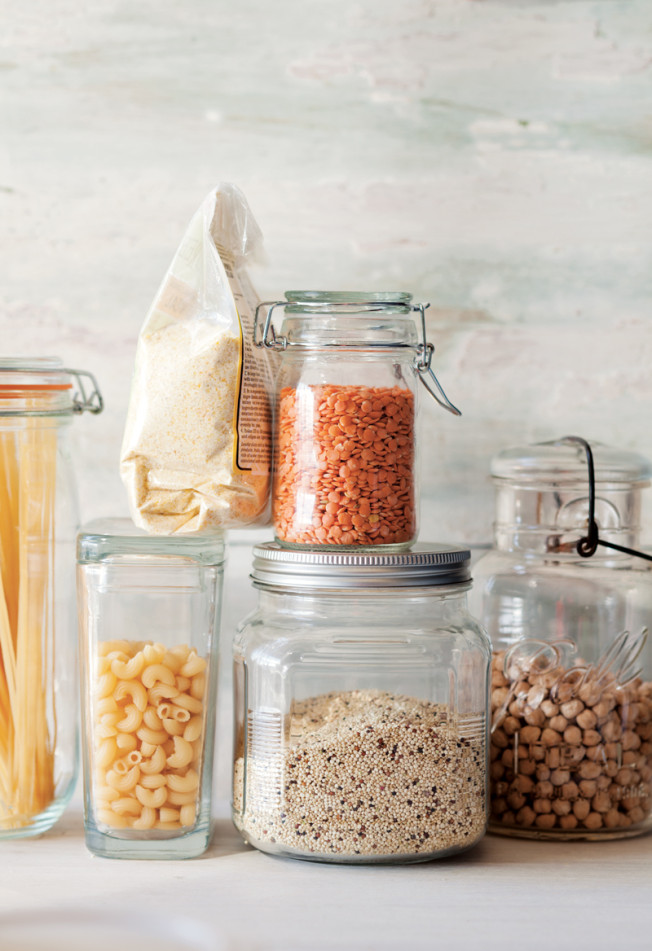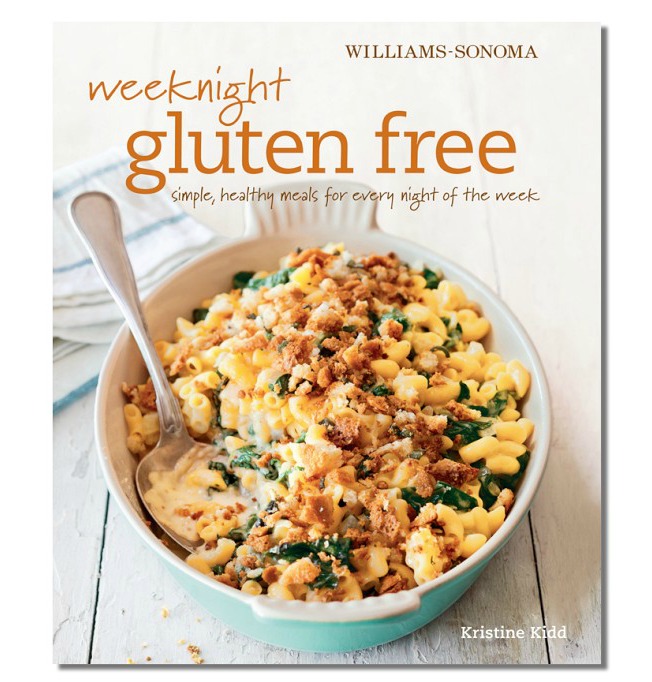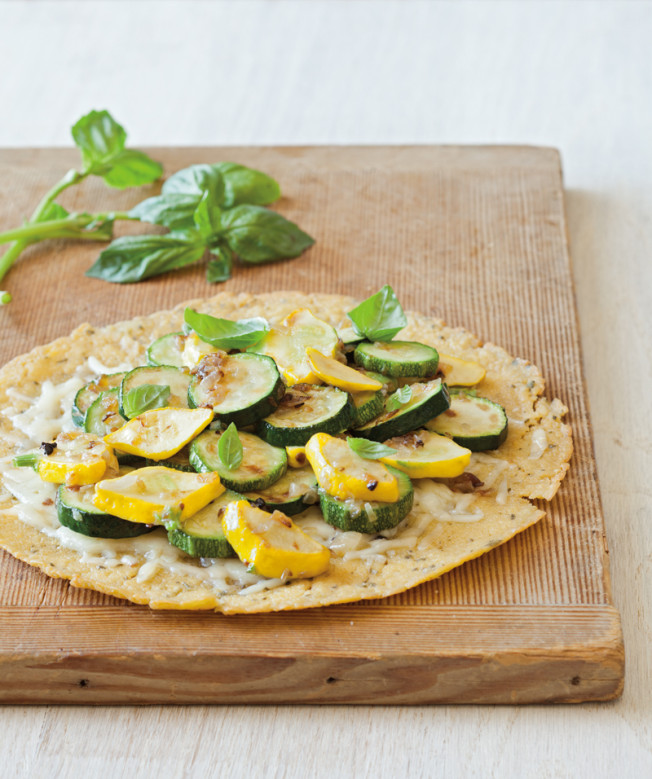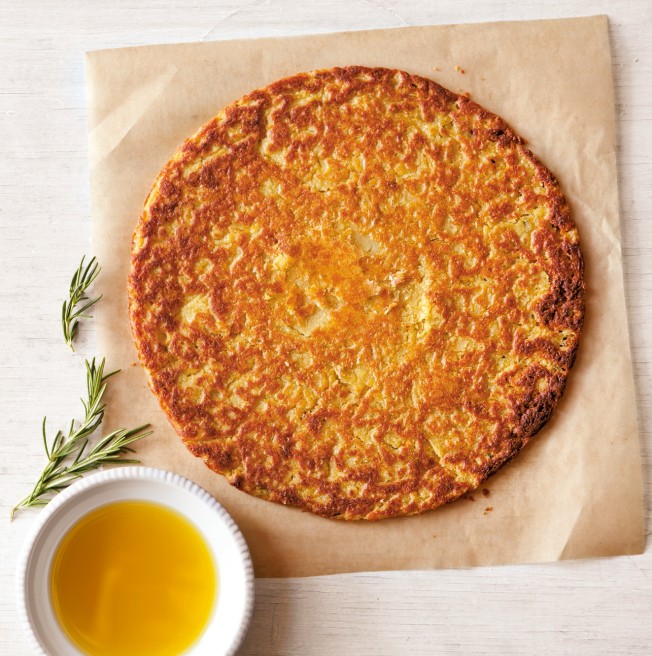Living gluten free doesn’t just mean giving up the foods you love. It can also be an opportunity to discover entirely new flavors, ingredients and techniques to bring to your meals — especially if you’re an experienced food writer and cookbook author.
 When Kristine Kidd learned she had celiac disease, she was determined to eat as well as she always had, every single day. After a year of experimenting in the kitchen, Weeknight Gluten Free was born, showcasing more than 100 recipes for quick dinners (and our pick for August’s Cookbook Club!). Flipping through the book, you won’t notice what missing; you’ll be tempted instead by the fresh, farmers’ market-inspired vegetables and simple preparations. You may also see a few unfamiliar but enticing dishes, like Mediterranean socca and microwave polenta.
When Kristine Kidd learned she had celiac disease, she was determined to eat as well as she always had, every single day. After a year of experimenting in the kitchen, Weeknight Gluten Free was born, showcasing more than 100 recipes for quick dinners (and our pick for August’s Cookbook Club!). Flipping through the book, you won’t notice what missing; you’ll be tempted instead by the fresh, farmers’ market-inspired vegetables and simple preparations. You may also see a few unfamiliar but enticing dishes, like Mediterranean socca and microwave polenta.
Here, we ask Kristine all about transitioning to a gluten-free diet, her favorite new ingredients to cook with, and what she eats on a typical day. We also share one of her favorite recipes from the book. Read on for her responses, and scroll to the bottom of this post to learn more about our Cookbook Club.
How did you learn you were gluten intolerant? What was your reaction?
I was diagnosed with celiac disease as an infant. At that time, my mother was told that if she kept me completely gluten free for 3 years I would be cured. Of course, we now know that is not the case, but I was brought up with that understanding. I have had digestive issues my entire life, but then my symptoms became torturous about 3 years ago. I deleted gluten from my diet and felt better within a few days, and a lot better within a few months. One of my doctors suggested being retested, but I got so sick after several days eating gluten, 2 out of 3 of my doctors thought it wasn’t worth the toll on my body to continue.
I was relieved to feel better and to know what was upsetting my system. Because I am interested in everything about cooking, learning to cook gluten free turned into an enthralling and satisfying project.
How did your cooking change?
I have always focused on fresh seasonal food, and I still do. I think of my new approach to cooking as naturally gluten free. I use lots of fresh vegetables, herbs, and fruit, and focus on whole, gluten-free grains such as cornmeal, quinoa, brown Jasmine and basmati rice. I also rely on legumes and sweet potatoes to add satisfaction where I might have used wheat in the past. I don’t like to make disappointing copies of dishes that rely on wheat. However, I was unwilling to give up pasta, and have discovered some very good gluten-free pastas.
What are some of your favorite new ingredients you’ve discovered? How do you use them?
I wasn’t fond of quinoa before changing my diet. But I developed a great way to cook this gluten-free grain, and now love it. I rinse the quinoa well before cooking it, use much less water than the recipes on the package call for, and mix in extra-virgin olive oil and chopped fresh herbs at the end. I use it for a tabbouleh salad chock full of cherry tomatoes, Persian cucumbers, chickpeas and lots and lots of fresh mint and parsley. Quinoa topped with sautéed scallops and orange-avocado salsa, and Moroccan flavored braised chickpeas and carrots are 2 new favorites.
I always enjoyed polenta, but now my quick, creamy weeknight version is a staple. It is great with eggs, sautéed mushrooms, and even as a pizza-like crust.
 What are the most used gluten-free ingredients in your refrigerator or pantry?
What are the most used gluten-free ingredients in your refrigerator or pantry?
Cornmeal, canned legumes, corn tortillas, extra-virgin olive oil, and fresh herbs. Fresh herbs add lots of flavor, and I have big pots filled with them on my patio.
Any easy tips/substitutions for making a dish gluten free?
Start with fresh, seasonal ingredients and don’t try to make copies of dishes that require gluten for their success. If you are changing your diet, this is a great time to explore local farmers’ markets and grocery stores with good produce sections.
What’s a typical day of eating for you (breakfast, lunch and dinner)?
I start off the day with a big bowl of fresh fruit, yogurt, and homemade granola (you can find my maple-pecan granola recipe on my blog).
For lunch I often make Polenta, Fried Eggs, Greens, and Blistered Tomatoes from the book. It is much quicker than the title sounds, and very satisfying.
For dinner I find myself cooking from the book, always something fresh like Fish Tacos with Broccoli Slaw and Lime Cream Sauce or Sautéed Chicken Tenders with Peas and Mint.
Tell us about writing Weeknight Gluten Free. What’s unique about the book?
I have devoted my career to creating dishes for Bon Appétit magazine and cookbooks, so I have lots of experience fashioning and testing reliable, modern recipes for publication. I spent a year of glorious experimentation in my kitchen, creating the recipes. They are all fresh and inspired by my visits to local farmers’ markets. Throughout the book are sections about naturally gluten-free staples that add satisfaction to meals—egg crepes, quick creamy polenta, quinoa, potatoes, sweet potatoes, skillet cornbread…. I use legumes in interesting ways and love brown jasmine and basmati rice as additional replacements for bready things.
Tell us about how the book is organized.
The chapters are: Almost Meatless, Seafood, Poultry, Meat, and Dessert. That allows people to easily find a dish that fits their mood.
What’s a technique, ingredient or dish from the book that may be new to people, but you hope they’ll try?
Socca is a quick Mediterranean flatbread that is naturally gluten free. It is made with chickpea flour, olive oil, rosemary, and water. It can be served on its own as a side dish or accompaniment to a meal. The crisp version can be topped with cheese or salad. The soft one can be topped with your favorite ingredients and eaten like a pizza or wrap. For a good taste of the book, try the Crisp Socca with Burrata, Greens, and Olive Dressing.
Any tips for making weeknight-friendly dishes in general?
A well-stocked pantry is key to easy weeknight cooking, and I offer a list of the items I always have on hand. These things allow me make a meal almost any night without stopping at a market.
What is your favorite recipe from the book and why?
I can’t list one favorite dish. The answer to that question varies with the season and my mood, but here are a few I find myself making over and over:
- Shrimp in Tomato-Olive-Caper Sauce on Creamy Microwave Polenta: It is very quick to make and I like the way the creamy polenta balances the bright sauce.
- Soft Socca with Summer Squash, Basil, and Gruyére: I have become addicted to socca. These Mediterranean flatbreads take only minutes to prepare and are very satisfying. Get the recipe below!
- Turkey Cutlets with Green Olives and Lemon over Quinoa: The bright sauce perks up the cutlets, and turkey is a great change from chicken. It is nice to remember that turkey is good more than one day a year.
- Grilled Salmon with Charmoula Chickpeas: We love to eat wild Alaskan salmon when it is in season, and the complex flavors of the chickpeas make a striking accompaniment.
- Steak and Rajas Tacos: Since going gluten free, I wrap almost anything in gently toasted corn tortillas, like the spice-rubbed steak and peppers in this recipe.
- Skillet Cornbread: With rich, toasty flavors and a tender crumb, no one will guess this loaf is gluten-free. I make it at least once a week, cut it into pieces, and freeze. That way I can have homemade bread whenever I want.
Soft Socca with Summer Squash, Basil and Gruyere
Soft Socca (recipe follows)
1 1/2 Tbs. olive oil
1/2 tsp. red pepper flakes
1 lb. (500 g.) yellow squash or zucchini, sliced
1 1/2 cups (9 oz./280 g.) minced red onion
Kosher salt and freshly ground black pepper
1 Tbs. balsamic vinegar
2 1/2 cups (about 7 oz./220 g.) aged Gruyere or Comte cheese, coarsely grated
1/3 cup (1/2 oz./15 g.) chopped fresh basil
Preheat the oven to 325 degrees F (165 degrees C). Prepare the socca according to the recipe. Meanwhile, in a large nonstick skillet over medium-high heat, warm the oil. Add the pepper flakes and then the squash and red onion. Sprinkle with salt and black pepper. Saute until the squash is tender-crisp, about 5 minutes. Add the vinegar and stir until evaporated. Remove from the heat. Taste and adjust the seasoning.
Remove the socca from the oven, and sprinkle the cheese over. Divide the squash mixture among the socca. Return to the oven and cook until the cheese melts, about 4 minutes. Transfer 1 socca to each of 4 warmed plates. Sprinkle with basil and serve right away. Serves 4.
Soft Socca
1 3/4 cups (7 oz./220 g.) chickpea (garbanzo bean) flour
Olive oil
1 1/2 tsp. minced fresh rosemary
Kosher salt and freshly ground pepper
In a bowl, combine 2 cups (16 fl. oz./500 ml.) water, the 1 3/4 cups (7 oz./220 g.) flour, 1 1/2 tablespoons oil, the rosemary, 3/4 teaspoon salt, and a generous amount of pepper. Whisk until smooth. Preheat the oven to 325 degrees F (165 degrees C). Line 2 large baking sheets with parchment paper and brush lightly with oil. Lightly brush a 10-inch (25-cm.) nonstick frying pan (with a 7 1/2-inch/19-cm. base) with oil and warm over medium-high heat until very hot. Add about one-fourth of the batter and swirl to coat the pan. Cook until air bubbles appear on the top and the bottom is brown, about 2 minutes. Using a silicone spatula, turn the socca over and cook until spotted brown on the bottom, about 1 minute longer. Turn over onto the parchment. Repeat to cook the remaining batter, forming 4 total. Bake for 5 minutes to cook through and serve, or arrange toppings on socca and bake according to the recipe directions. Makes 4 soft socca.
Love collecting cookbooks? Enjoy trying new recipes? Join us for a monthly Cookbook Club class. Led by our talented culinary experts, these exclusive cooking classes showcase recipes from a different cookbook each month.
- Each 1½ – to 2-hour class features cooking tips and techniques and a three-course tasting menu from the book’s best recipes, prepared while you watch.
- Class fee of $75 includes the cookbook with signed bookplate.
- Participants receive a 10% discount on store purchases the day of the class.
- Available monthly at select stores; class times vary by store location.
- Space is limited and reservations are required. Call a participating store to register.




1 comment
[…] Soft Socca with Summer Squash, Basil and Gruyere Socca may look like a big tortilla, but this gluten-free option is actually made with chick pea flour, olive oil and rosemary. […]